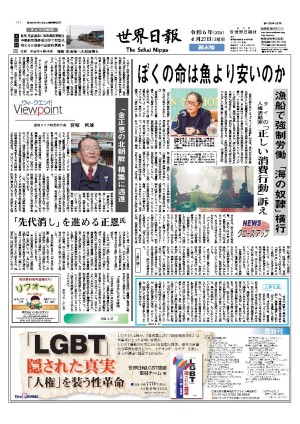Obama green energy spending distorts solar power markets, risks ‘bubble’ 太陽光発電市場を歪めるオバマ氏のグリーンエネルギー予算
Obama green energy spending distorts solar power markets, risks ‘bubble’
President Obama has engaged in unprecedented spending on wind and solar power, and argues they’re key to getting the U.S. off of fossil fuels, but recent studies have raised new questions about just how much the so-called green energy sources will cost taxpayers.
A report from the Taxpayers Protection Alliance argues that heavy government subsidies for solar power - including spending from Mr. Obama’s 2009 stimulus package - have distorted the market and led to an artificial demand for solar energy across the country. Financial institutions, in turn, have made their own investments because of the high level of government subsidies, creating a “bubble” that will burst when federal and state backing begins to dry up, the study claims.
“For [investors] making money, the best type of investment to go with nowadays is something the government is doing because, in the end, the government is just going to use taxpayer money, no matter what the investment is, good or bad,” said Michi Iljazi, communications and policy manager at the Taxpayers Protection Alliance.
Taxpayers already have lost money on government investments into solar power. Most notably, taxpayers were stuck with a $530 million tab when solar giant Solyndra went bankrupt in 2011.
The Taxpayers Protection Alliance study makes the case that private investors are pouring money into the solar industry because government backing is propping up the market. When subsidies end and private investments slow, the government may be unwilling to let the industry sink and could use taxpayer money to keep it afloat.
The study comes as the White House doubles down on its clean-energy agenda, and as proponents of wind and solar power push for those fuels to take the place of coal, which increasingly is being phased out by Environmental Protection Agency regulations.
Last month, Mr. Obama laid out a plan for the U.S. to get 20 percent of its electricity from renewable sources other than hydropower by 2030. The nation currently gets just 7 percent of its power from those sources.
“These are very ambitious goals, a near tripling for the United States,” Mr. Obama said last month. “This shows that the world’s major economies can begin to transcend some of the old divides and work together to confront the common challenge that we face, something that we have to work on for future generations.”
The Solar Energy Industries Association, the solar sector’s leading trade group, did not respond to a request for comment.
There also are fresh questions about the cost of wind power, the beneficiary of heavy federal spending and generous tax credits under this administration.
A recent report from the Institute of Political Economy at Utah State University claims that the actual cost of generating wind power is about 48 percent higher than proponents claim. The study’s authors examined factors such as subsidies, needed infrastructure spending and other issues they say are often overlooked.
“We refer to the ‘true cost’ of wind as the price tag consumers and society as a whole pay both to purchase wind-generated electricity and to subsidize the wind energy industry through taxes and government debt,” said Ryan Yonk, one of the report’s authors. “After examining all of these cost factors and carefully reviewing existing cost estimates, we were able to better understand how much higher the cost is for Americans.”
July 12, 2015
太陽光発電市場を歪めるオバマ氏のグリーンエネルギー予算
オバマ大統領は、風力・太陽光発電にかつてない規模の予算を投入し、米国が化石燃料から脱するためのカギとなると主張しているが、最新の研究で、グリーンエネルギーにどれだけの税金を投入すべきかに関して新たな疑問が生じている。
納税者保護連盟からの報告によると、オバマ氏の2009年景気刺激策からの予算など、太陽光発電への大規模な補助金のために、全米の市場が歪(ゆが)められ、太陽光エネルギーへの需要が人工的に作られている。一方、金融機関は、高水準の政府補助金を当て込んで独自の投資を行っている。この「バブル」は、連邦政府、州政府からの支援がなくなれば、はじけることになるという。
納税者保護連盟の広報・政策責任者、ミチ・イルジャジ氏は「現在、投資家が利益を出すための最善の投資法は、政府が取っている方法だ。政府は、いいものであれ、悪いものであれ、どんな投資であっても最終的には税金を投入するからだ」と語った。
太陽光発電への政府の資金投入によって、納税者はすでに損をしている。最もよく知られているのは太陽光大手のソリンドラだ。2011年に破産し、5億3000万㌦の税金が失われた。
納税者保護連盟の研究によると、個人投資家らが太陽光発電業界に投資するのは、政府が太陽光市場への支援を強化しているからだ。補助金が終わり、個人投資が下火になれば、太陽光発電産業を後退させたくない政府は、税金を投入し浮揚を図る可能性がある。
この報告が出される一方で、ホワイトハウスはクリーンエネルギー政策を強化し、風力・太陽光発電の支持者らは石炭に代わる燃料にしようと、風力・太陽光発電を推進している。石炭は環境保護局の規制で使用は減少している。
オバマ氏は先月、2030年までに水力以外の再生可能エネルギーから米国の電力の20%を得る計画を発表した。現在は7%にとどまっている。
オバマ氏は先月、「非常に野心的な目標であり、米国にとってはほぼ3倍化に当たる。これは、世界の主要国は過去の相違を乗り越え、現在直面している共通の課題に協力して取り組めることを示している。今後の世代のためにしておかなければならないことだ」と語った。
太陽光発電部門の有力業界団体である太陽光エネルギー産業協会に問い合わせたが、コメントは得られなかった。
風力発電のコストについても新たな疑問が生じている。風力発電は、現政権下で連邦政府から大規模な支援を受け、税の控除も受けている。
ユタ州立大学の政治経済研究所の報告によると、風力発電の実際のコストは、風力発電推進者らの主張より約48%高い。この報告の作成者は、補助金、必要なインフラ支出、その他の見落とされやすい問題について検証した。
報告作成者の一人、リヤン・ヨンク氏は「ここで言っているのは、消費者と社会が全体として、風力発電電力を購入し、税金と政府債務で風力発電産業を支援するために負担している価格である『真のコスト』のことだ。これらのコスト要因すべてをチェックし、現在のコスト見積もりを慎重に見直した結果、米国人の負担するコストがいかに高いかがよく分かった」と語った。
(7月12日付)





